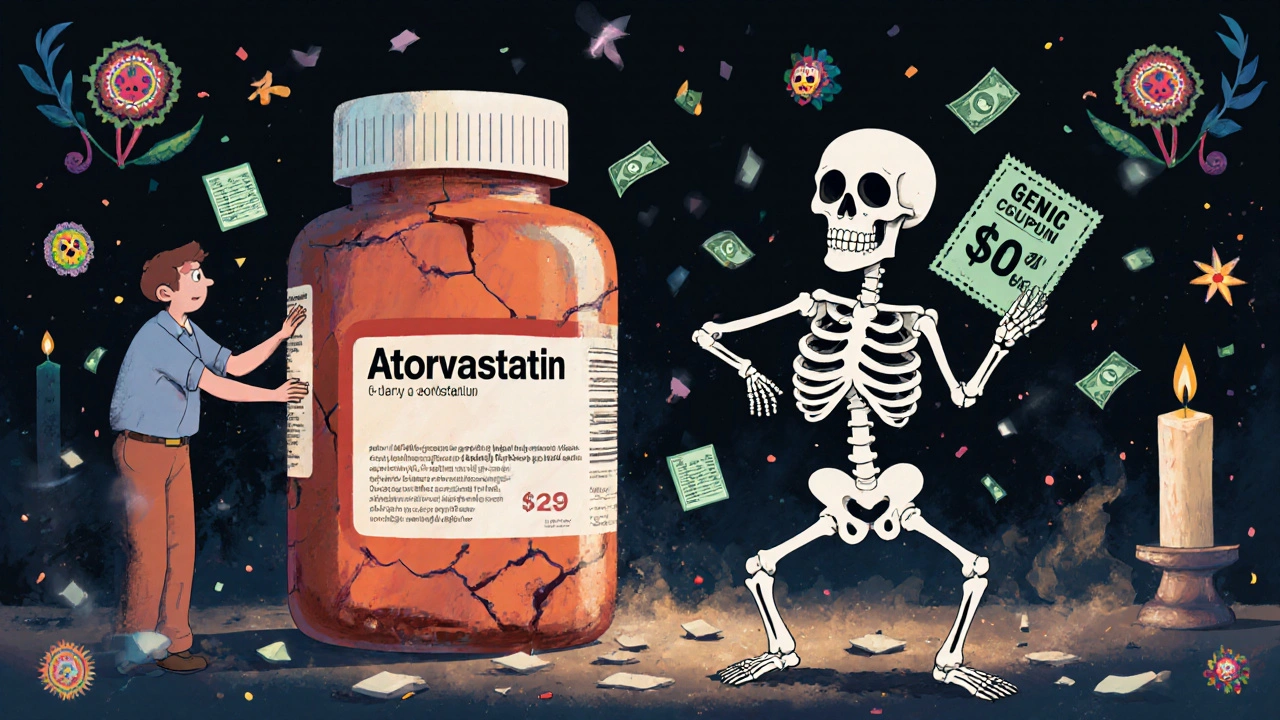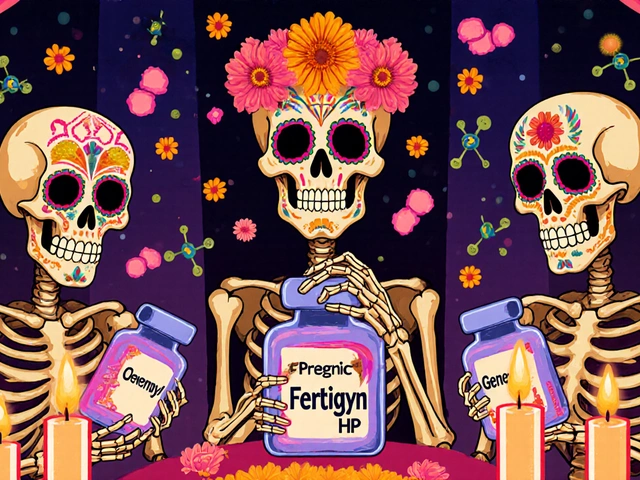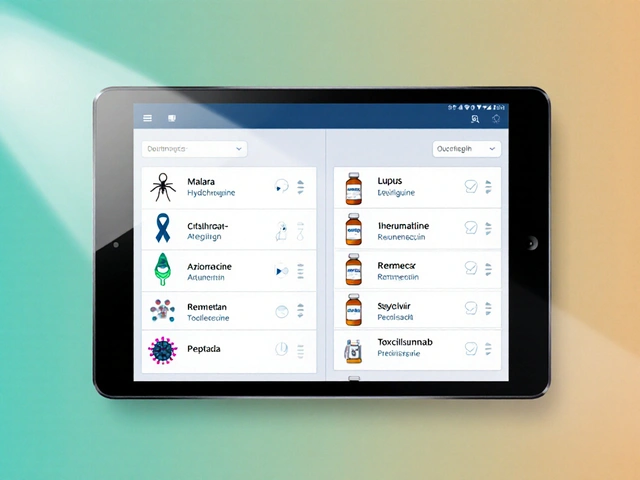Pharmacy Inventory Management: Smart Generic Stocking Strategies for 2025

Most pharmacies carry hundreds of medications, but generic drugs are the real money-makers. They make up 90% of all prescriptions filled in the U.S., yet they only account for about 20% of total drug spending. That’s not a coincidence-it’s a financial opportunity. If you’re still stocking generics the same way you did five years ago, you’re leaving money on the table-and risking stockouts, expired inventory, and lost sales.
Why Generic Stocking Is Different
Generic drugs aren’t just cheaper versions of brand-name pills. They’re a completely different beast when it comes to inventory. Brand-name drugs often have stable demand, long lead times, and predictable reorder cycles. Generics? They change fast. One month, you’re ordering 100 bottles of a brand-name blood pressure med. The next, a new generic hits the market, and suddenly that brand’s sales drop 70%. If your system doesn’t adjust, you’re stuck with $5,000 in expired inventory.Here’s the reality: generic drug demand is volatile. New generics enter the market every week. Suppliers change pricing. Patients switch based on cost. And if you don’t track this in real time, your pharmacy’s cash flow takes a hit.
Take atorvastatin. When the generic version first came out, pharmacies that didn’t adjust their ordering systems ended up with months of leftover brand-name stock. One independent pharmacy in Ohio lost $3,200 because their system didn’t auto-reduce the brand’s reorder quantity. That’s not an outlier-it’s common.
The 80/20 Rule in Pharmacy Inventory
You don’t need to manage every single generic drug the same way. In fact, you shouldn’t. The 80/20 rule applies hard here: 80% of your drug costs come from just 20% of the medications you carry. But here’s the twist-those 20% are mostly generics.Focus your attention on the high-volume, low-cost generics: metformin, lisinopril, atorvastatin, levothyroxine, omeprazole. These are the workhorses. They move fast. Patients refill them every 30 days. And if they’re out of stock, patients don’t wait-they go to the big chain down the street.
For these, keep a week’s worth of inventory on hand. That’s usually enough to cover demand spikes and minor supply delays without tying up too much capital. For slower-moving generics-like niche thyroid meds or rare antibiotics-you can afford to order less frequently and keep smaller quantities.
How to Set Your Reorder Points (ROP) and Reorder Quantities (ROQ)
Forget guessing. Use math.Your Reorder Point (ROP) should be: (Average Daily Usage × Lead Time in Days) + Safety Stock.
Let’s say you sell 5 bottles of metformin 500mg per day. Your supplier takes 3 days to deliver. You add a 2-day safety buffer because sometimes trucks get delayed. That’s:
(5 × 3) + 10 = 25 bottles.
When your stock hits 25, your system should trigger an order. That’s it. No more waiting until you’re down to 5 bottles and panicking.
For Reorder Quantity (ROQ), use the Economic Order Quantity (EOQ) model. It balances ordering cost and holding cost. For most pharmacies, ordering in multiples of 100 or 200 units works best for high-turnover generics-just enough to get bulk pricing without overstocking.
Don’t just set it and forget it. Re-calculate ROP and ROQ every quarter. If metformin sales jump to 7 bottles a day after a new diabetes campaign, your old formula is now wrong.
Use the Minimum/Maximum Method
This is the simplest and most effective system for most independent pharmacies.Set a minimum stock level and a maximum stock level for each generic drug. For example:
- Metformin 500mg: Min = 20 bottles, Max = 60 bottles
- Lisinopril 10mg: Min = 15 bottles, Max = 45 bottles
- Simvastatin 20mg: Min = 10 bottles, Max = 30 bottles
Your inventory system should alert you when stock hits the minimum. You order just enough to bring you back up to the maximum. No more, no less.
This method works because it’s automatic. It doesn’t require staff to remember formulas. It just works. And it prevents both stockouts and overstocking.

Track Expiry Dates Like Your Business Depends on It
It does.Generics often have shorter shelf lives because manufacturers squeeze margins. You buy them cheaper, but they expire faster. One pharmacy in Melbourne reported losing $1,800 last year to expired generic antacids because they didn’t track expiry dates by batch.
Use your pharmacy software to sort generics by expiration date. Push the oldest stock to the front. If a generic is within 30 days of expiring, offer it as a discount to patients who need it-especially if they’re on fixed incomes. Many will take it. If you can’t sell it, return it. Most wholesalers will take back unopened generics within 90 days of purchase.
Don’t wait until the last week. Set up monthly expiry audits. Make it part of your weekly cycle count.
Handle New Generic Launches Like a Pro
When a new generic hits the market, your brand-name version’s sales will drop fast. But not all at once. Some patients switch immediately. Others wait for their prescriber to change the script. Some don’t switch at all.Here’s what you do:
- When a new generic is approved, check your pharmacy’s formulary updates.
- Reduce your brand-name reorder quantity by 30% immediately.
- Start ordering the generic in small batches-maybe 20-30 units-to test demand.
- After two weeks, if sales are steady, ramp up to full volume.
- Use your inventory software to flag the brand-name version for automatic price reduction if it’s still sitting after 60 days.
Pharmacies that do this reduce brand-name overstock by 60% and cut waste by 40%. Those that don’t? They’re stuck with expired inventory and angry patients who can’t get their meds.
Use Data, Not Guesswork
Your pharmacy software isn’t just for billing. It’s your inventory brain.Make sure it tracks:
- Cost of Goods Sold (COGS) per generic drug
- Turnover rate (how many times you sell and replace each item per year)
- Supplier lead times and fill rates
- Expiration dates by batch
- Therapeutic interchange success rates
Look at this data weekly. If a generic’s turnover rate drops below 4x per year, it’s a candidate for removal or reduced stocking. If another’s turnover is 12x, you’re probably understocking it.
Top-performing pharmacies now use predictive analytics. Clotouch’s new system, for example, uses historical data to predict when a new generic will hit the market-and adjusts orders before the brand-name version crashes. It’s not sci-fi. It’s available now.
Train Your Staff
No system works if your staff doesn’t use it right.Train everyone on:
- How to enter received generics correctly (batch number, expiry date)
- When to return unclaimed prescriptions to stock (within 24 hours)
- How to flag slow-moving generics for review
- When to call the supplier about delayed shipments
One pharmacy in Queensland reduced inventory discrepancies by 22% just by training staff to return unclaimed prescriptions. That’s free inventory-no extra cost.
Also, teach your staff to talk to patients about generics. If a patient asks why they’re getting a different pill, they should be able to say: “It’s the same medicine, just cheaper. Your co-pay drops from $45 to $12.” That builds trust.
Don’t Over-Automate
AI and automated systems are great-but they’re not perfect.One pharmacist in California automated her generic stocking based on sales data alone. She didn’t account for a patient with kidney disease who couldn’t take the new generic. The system kept ordering it. The patient went without meds for two weeks. She lost a loyal customer.
Always let clinical judgment override algorithms. If a patient has a history of adverse reactions to a specific generic manufacturer, don’t auto-substitute. Use your professional discretion.
What to Do If You’re Behind
If your pharmacy is still using spreadsheets or manual logs for generics, start here:- Pick your top 10 best-selling generics.
- Set minimum and maximum levels for each.
- Enable expiry date tracking in your software.
- Run a weekly cycle count on these 10 items.
- Check your supplier’s lead times-call them if they’re inconsistent.
Within 30 days, you’ll see fewer stockouts and less expired inventory. That’s profit you didn’t know you were losing.
Final Thought: Generics Are Your Competitive Edge
Big chains have AI, bulk pricing, and corporate buyers. You don’t. But you have something they can’t copy: personal relationships. Patients come to you because they trust you. If you manage your generic inventory well, you can offer them lower prices, faster service, and fewer disruptions.That’s not just good business. It’s better pharmacy care.






bro this is gold honestly i just started managing inventory at my uncle's pharmacy and i was like wow why is everything so chaotic turns out we were ordering like its 2018 lol
the min max method changed everything for us we used to have 3 people doing weekly counts now its one person and we dont even panic when a batch expires
i used to think generics were just cheap stuff until i saw how much money we were losing on expired atorvastatin. now i check expiry dates every friday like its my job. turns out it is. i feel like a pharmacist now not just a guy who hands out pills
This is such a thoughtful, well-structured guide. I’m so glad someone finally put this together in plain language. So many pharmacies are still flying blind-and it’s costing patients and profits alike. Thank you for sharing this.
one thing no one talks about is how staff just dont enter batch numbers right like i saw someone put 2026 instead of 2025 and we had 12 bottles sit for 6 months
the 80/20 rule hit me hard. we were stocking 40 different generics like they were all equal. now we focus on the top 8 and guess what? our turnover jumped 35% and we have way less clutter. simple wins
While the practical advice here is undeniably sound, I must question the underlying epistemological assumption: that pharmaceutical inventory can be reduced to algorithmic optimization without eroding the phenomenological experience of patient care. Are we managing drugs-or souls?
lol the part about not over-automating made me laugh. my cousin’s pharmacy auto-subbed a patient’s meds and she had a seizure because the generic had a different filler. now she only goes to CVS. you can’t trust a machine with someone’s health.
you know what’s wild is how we treat generics like they’re disposable but the people who take them are anything but. i mean metformin is literally keeping people alive and we’re treating it like toilet paper. we need more heart in this work
we started doing weekly cycle counts on the top 10 and within 3 weeks we saved over $2k in expired meds. it’s not sexy but it’s the quiet stuff that keeps the lights on
Don’t forget: lead times vary. Always call your supplier.
just started using the min/max system and i’m already seeing less stress 😊 also we started giving discounts on near-expiry meds and patients are so grateful. one lady cried and said she hadn’t been able to afford her meds in months 🥹
if you’re still using spreadsheets, stop. just stop. your time is worth more than your inventory errors. get software. do it now. your future self will thank you.
it’s tragic really. we’ve turned healthcare into a spreadsheet game where pills are just numbers on a screen and patients are just data points in a turnover chart. we’ve forgotten that behind every generic bottle is a human being who just wants to wake up tomorrow without pain. and now we’re optimizing their suffering for profit margins. how did we get here?
the predictive analytics piece is critical-Clotouch’s algorithm uses ARIMA modeling on formulary change velocity, supplier fill-rate variance, and therapeutic interchange adoption curves to forecast generic launch impact with 92% accuracy. if you’re not integrating these KPIs into your inventory engine, you’re operating in a vacuum.